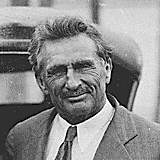
|
The following Great White South article is obsolete.
This article is no longer part of the Great White South timeline. This page has not been deleted from this website for sentimental and reference purposes. You are welcome to comment on the talk page. |
| Foreman: | Juán Cerra |
| Party Chairman: | Michael P. Long |
| House Leader: | Roberto Borges |
| Founded: | 1915 |
| Split from: | Liberals, Nationals |
| Headquarters: | Casa de Bodega |
| Youth wing: | PPS Joven |
| Ideology: | Socialist; Democratic Socialist |
| Political position: | Left-Wing |
| International affiliation: | Socialist Coalition of Antarctica |
| Official colours: | Red |
| House Delegates: | 14/40 |
| Estadistas: | 2/5 |
The People's Party of Santiago (Spanish: Partido del Pueblo Santiagano; Finnish: Santiagan Kansanpuolue) is one of the five major political parties of Santiago, and, along with the Liberal Party, is one of the country's two dominant parties. Current President Juán Cerra is a member of the People's Party.
The People's Party describes itself as "Socialist", with internal factions representing most of the major Socialist sub-groups; including typical mid-Left Socialists, moderate Democratic Socialists, socially conservative Religious Socialists, and far-Left Anarcho-Socialists. Most of the country's Communists support the Workers' Party, rather than this party.
Since its foundation in 1914, the People's Party has constantly been a powerful force in the country, and has controlled the President's office for a total of 35 years, divided between four different Presidents. However, since the 1950s, the People's Party has spent most of its existence being the "official opposition" (the second-largest party), while the top spot has rotated between the Liberals, the Santiago Party, and the Greens.
History[]
Foundation and Bodega years (1915-1931)[]
- See also: Winter Uprising

In September 1914, President Esteban Sanchez brought Santiago into World War I, on the side of the Central Powers. At first, the public were in favor of this War, but their support gradually started to dwindle; and in May 1915, both the civilians and the Military held a general strike. After a few months of conflict between the strikers and Sanchez' supporters, Santiago withdrew from the War, and Sanchez was forced to resign.
Colonel Francesco Bodega, one of the key officers behind the Winter Uprising, became something of a National Hero during the strike, and decided to found a new political Party to represent the changing views of Santiago's people. This became the Santiagano People's Party, and won the election to decide on Sanchez' replacement.
Within days of its foundation, the Party had got Bodega elected as President. He completed the time left on Sanchez' term, and easily won the next election, securing another 5 years of PPS rule in the country. However, in 1921, Francisco Bodega declined to run for another term (despite public support); and the party nominated Julio Carlotta, expecting an easy victory, due to the support they had won in the last two elections.
However, Carlotta proved to be an unpopular candidate, appearing clumsy, wooden and unlikable; and the election went to the Liberal Party's Juan Schmidt, who proved to be one of the most capable Presidents in the country's history, and held the office until 1931, when he declined to run for a third term.
José Guerrero (1931-1951)[]

Jose Guerrero.
The People's Party saw this as a chance to regain the support they had had a decade earlier, and nominated the experienced Estadista of the State of Isla, José Guerrero. Guerrero had proved that he was fully capable of combatting the Great Depression, as he had shown in his home State, and he won a close victory in 1931.
Guerrero's "New Deal"-esque policies were very successful, and his support grew over the next five years. He comfortably won a second term in 1936; and his support was strengthened even more by the Spanish Civil War and the Bellinsgauzenia War. He won a landslide in 1941; but the Wars were drawing to a close, and the Depression was almost over, so Guerrero felt that he had no reason to continue.
He ran for a final term in 1946, and, once again, won the election. During his final 5 years in office, Guerrero began to "calm" the country after a long period of turmoil. In 1951, after 20 years as President, he retired from Politics, and was succeeded by Felipe Juárez.
Decline of the Party (1951-1971)[]
Juárez won the 1951 election, largely due to leftover support from Guerrero's popularity, but quickly became very unpopular. He did very little for the country, and took frequent vacations, leaving caretakers to run the government. Many accused him of being corrupt, and it was during his tenure that Organized Crime started to become a major problem for Santiago.
In 1956, he was easily voted out of office, and the Liberal Benito Zapata replaced him. This marked a turning point in the party's history, when they became stereotyped as the "official opposition" party, who could never come first in an election. The People's Party started to decline in popularity, and it wasn't until 1971 (the defeat of disgraced President Jorje Rosadilla) that the party started to regain its former success.
Recent Years (1971-Present)[]
After 1971, the People's Party became a major player on the National stage again, and their support started to steadily grow. In 2006, Juán Cerra was elected, marking the start of a new age of success for the Party.
Politics[]
Political Positions[]
Internal Factions[]
List of Foremen[]
Foremen who became President are listed in bold, as are the dates of their Presidency.
- 1915-1921 - Francisco Bodega (1914-1921)
- 1921-1930 - Julio Carlotta
- 1930-1951 - José Guerrero (1931-1951)
- 1951-1956 - Felipe Juárez (1951-1956)
- 1956-1970 - Carlos Gutierrez
- 1970-1977 - Manuel Hypiää
- 1977-1989 - Samson Wright
- 1989-2001 - Reina Allende
- 2001-Present - Juán Cerra (2006-2011)
